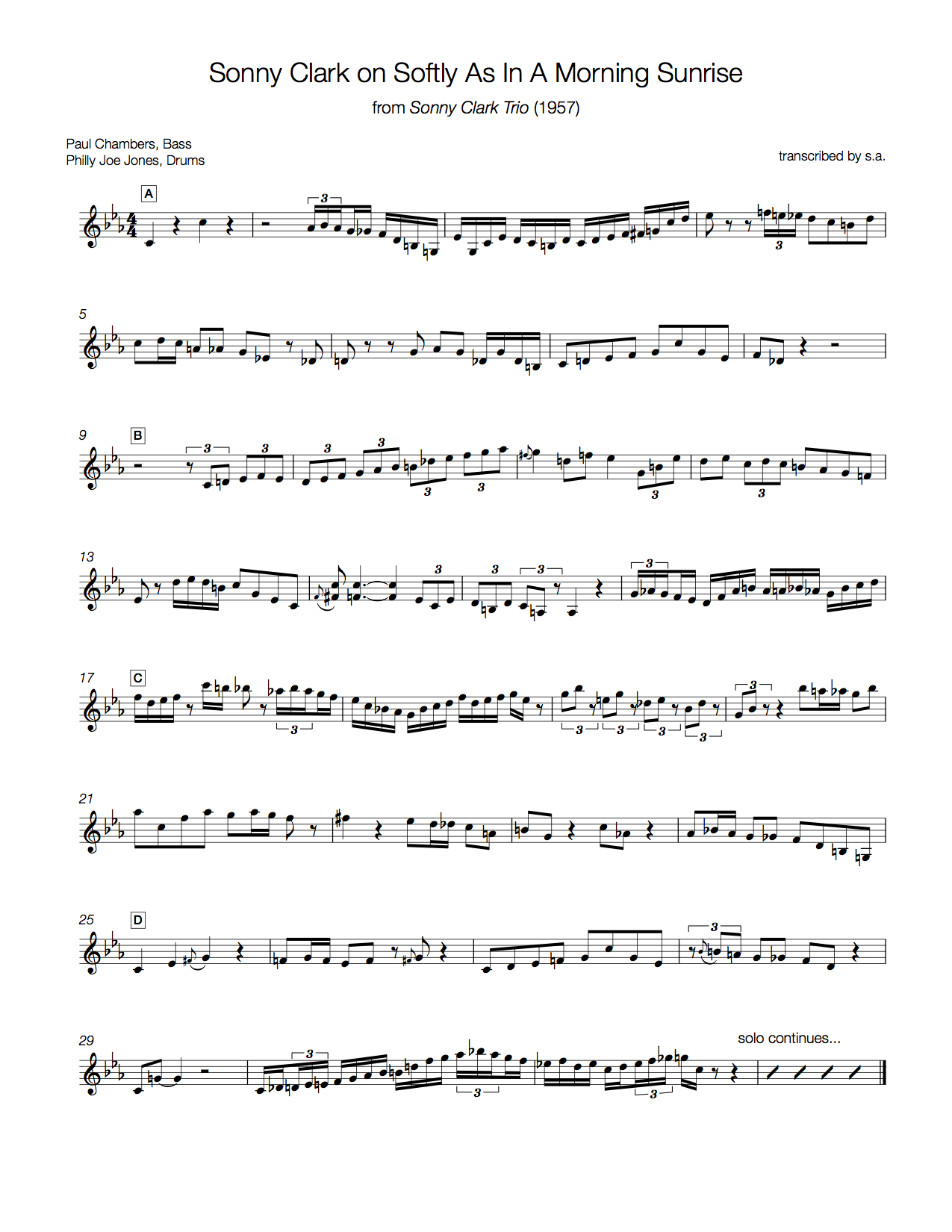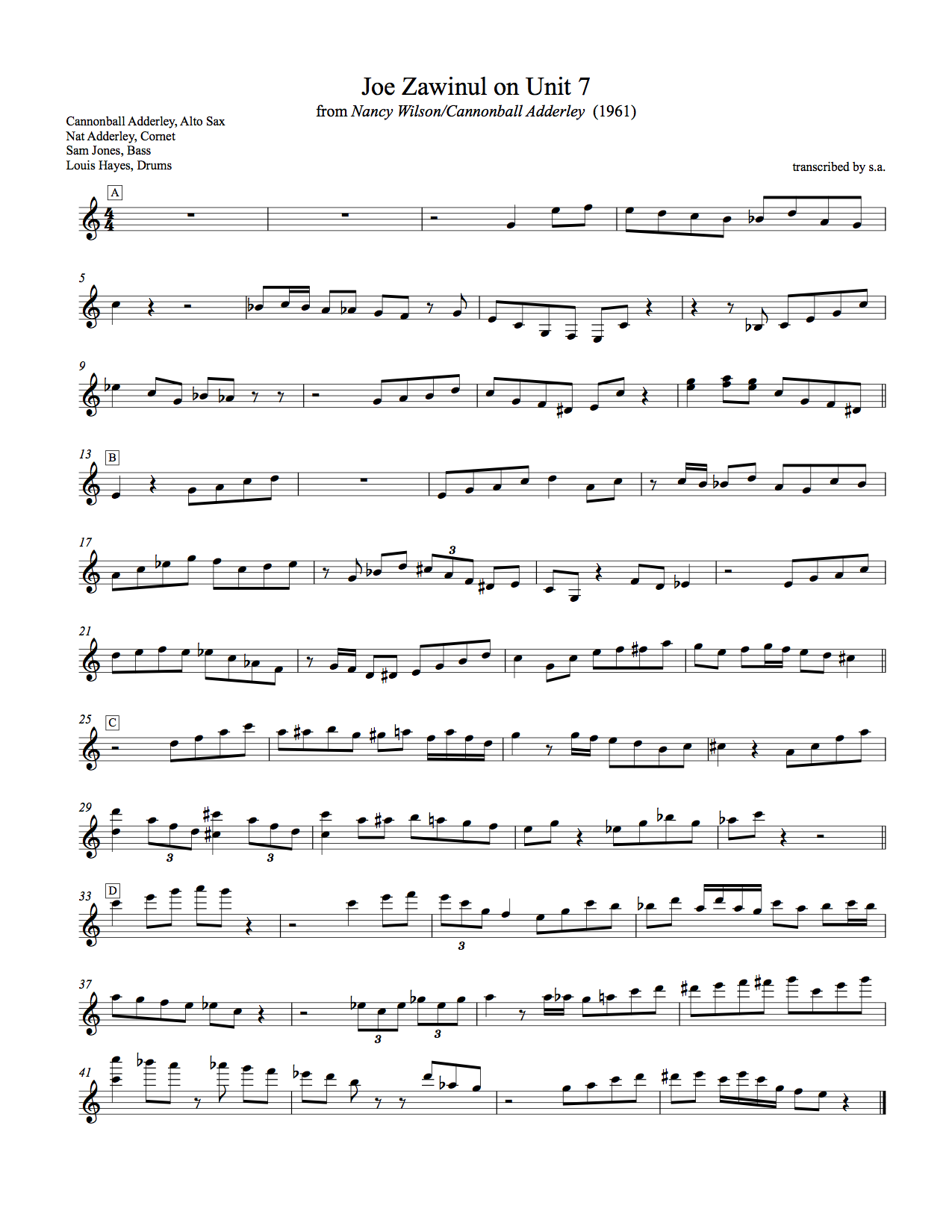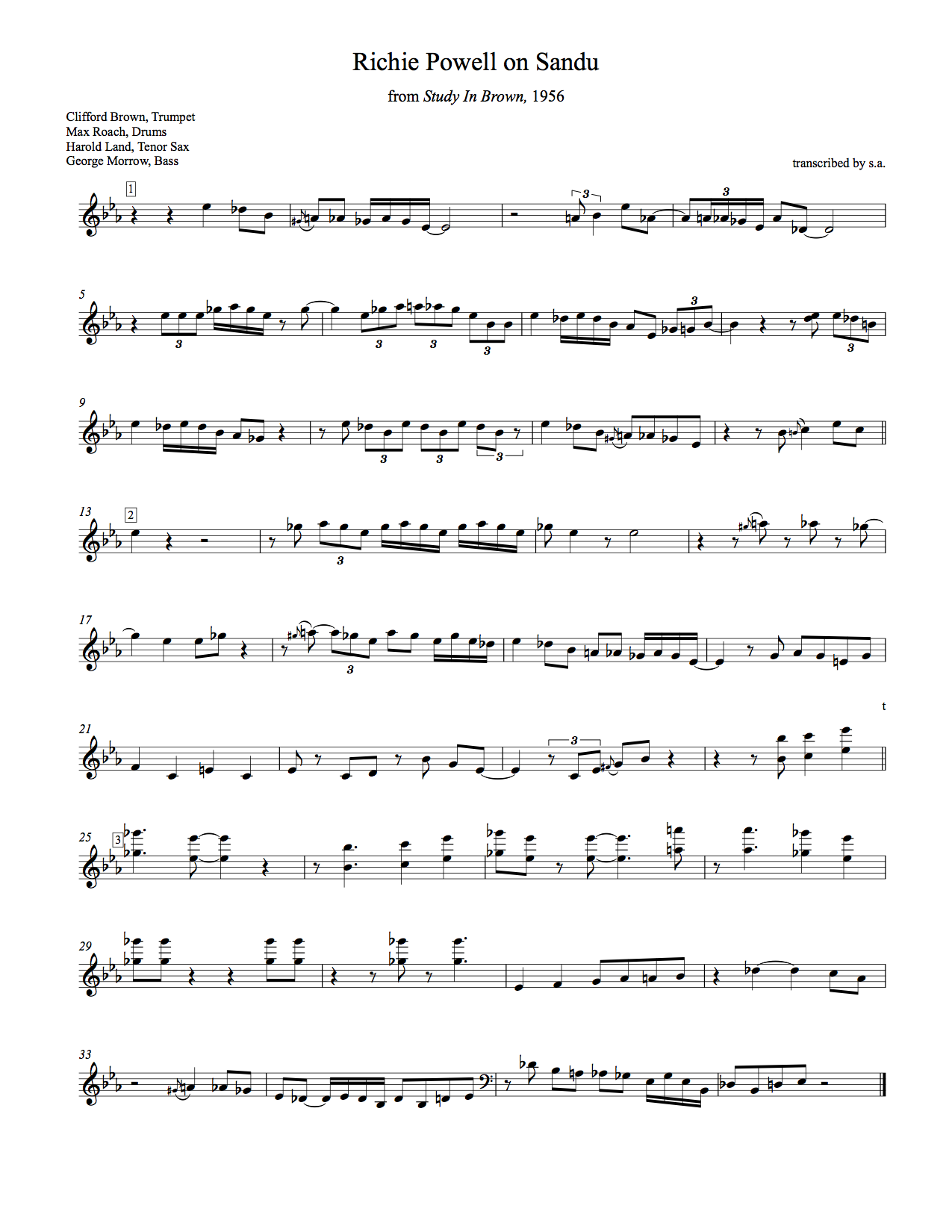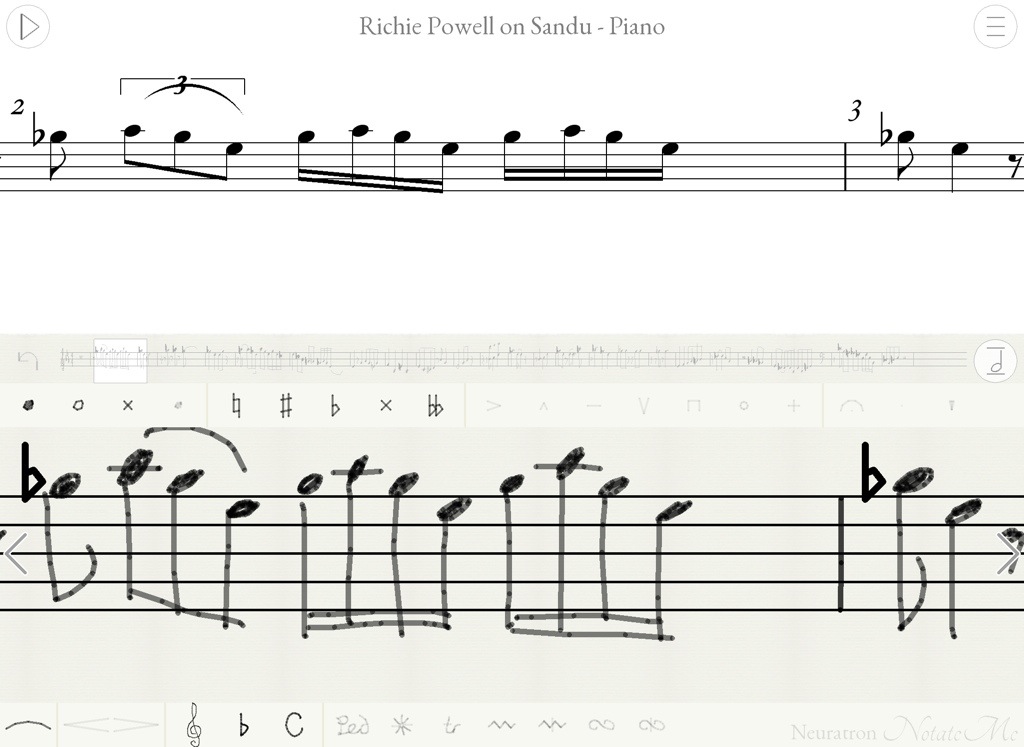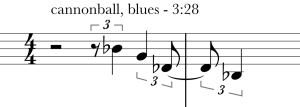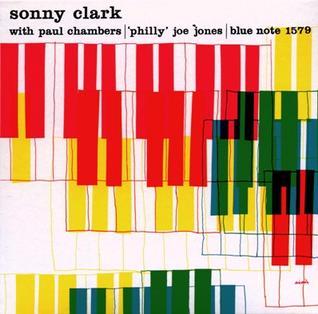
In honor of Sonny Clark’s birthday yesterday, here is a partial transcription of his solo on “Softly As In A Morning Sunrise” from the album Sonny Clark Trio. The album is Clark’s first trio album and features Paul Chambers on bass and Philly Joe Jones on drums.
I find it particularly interesting to hear which phrases and sounds Clark tends to repeat. Compare for example the
beginning of the the double-time run in measure 2 with the end of the bridge in measure 24. While the notes are the same, the pattern is now played at half the speed to fit in with the 8th-note groove rather than the double-time feel.
This pattern occurs many more times throughout the recording, so take a listen and add it to your own vocabulary!
